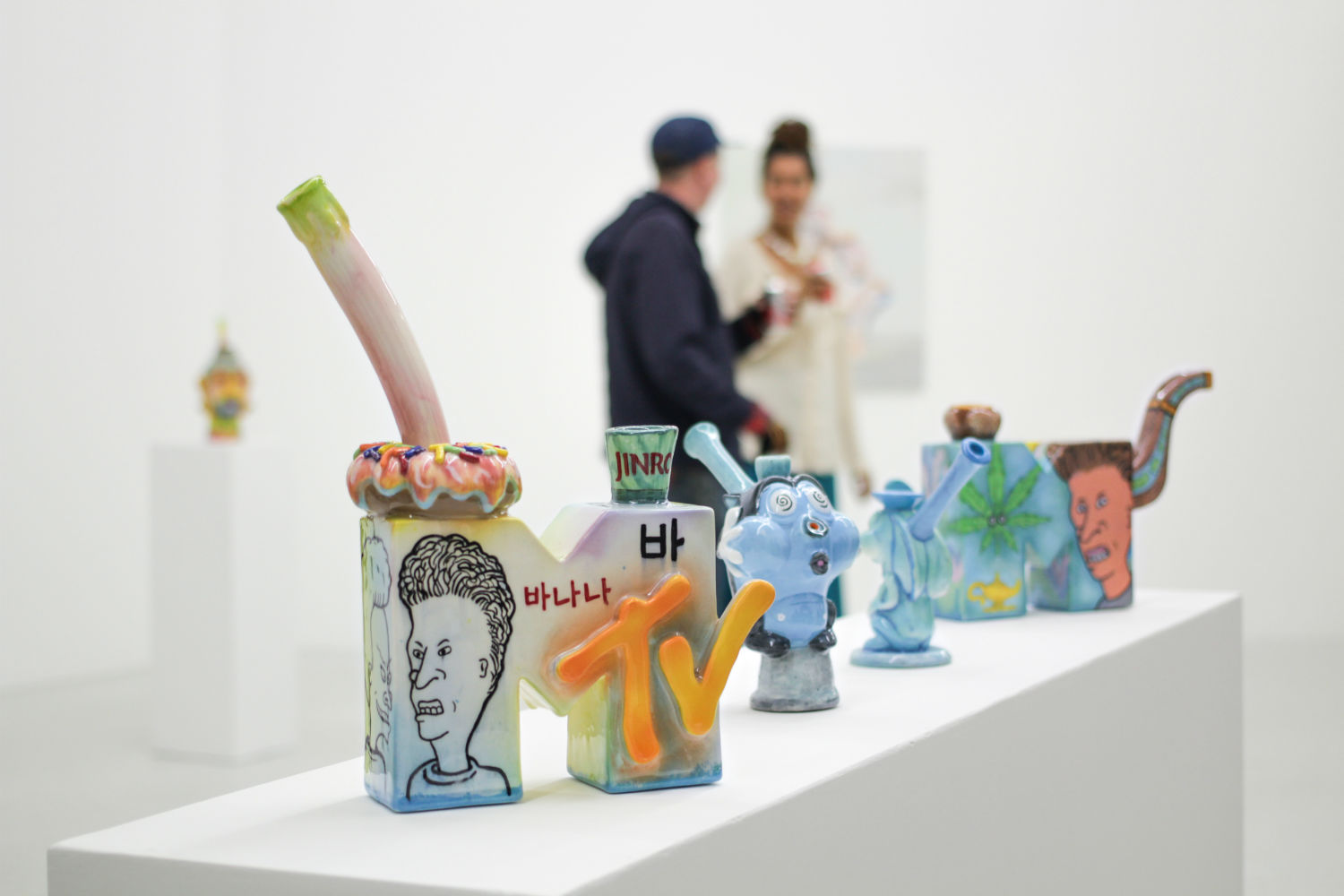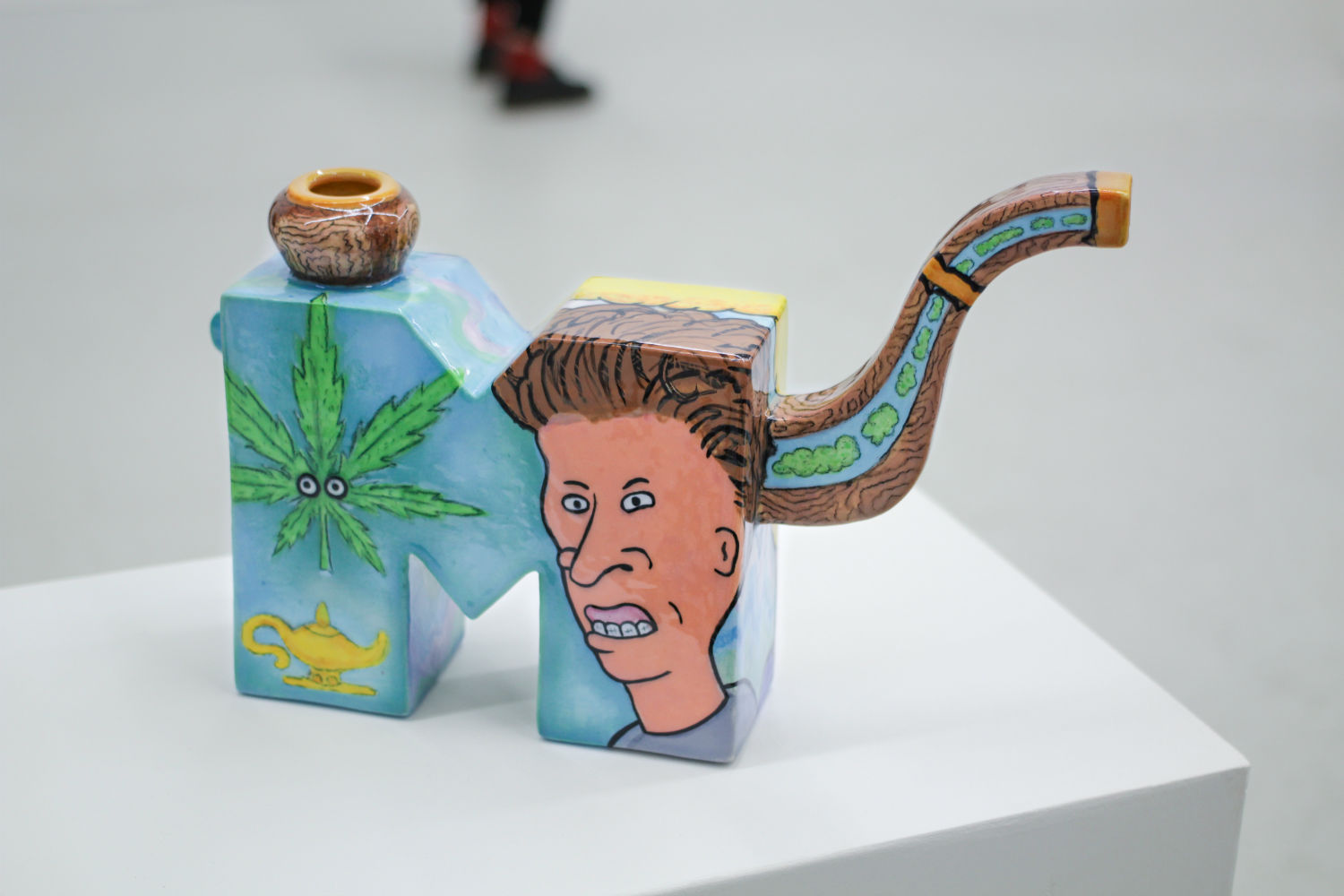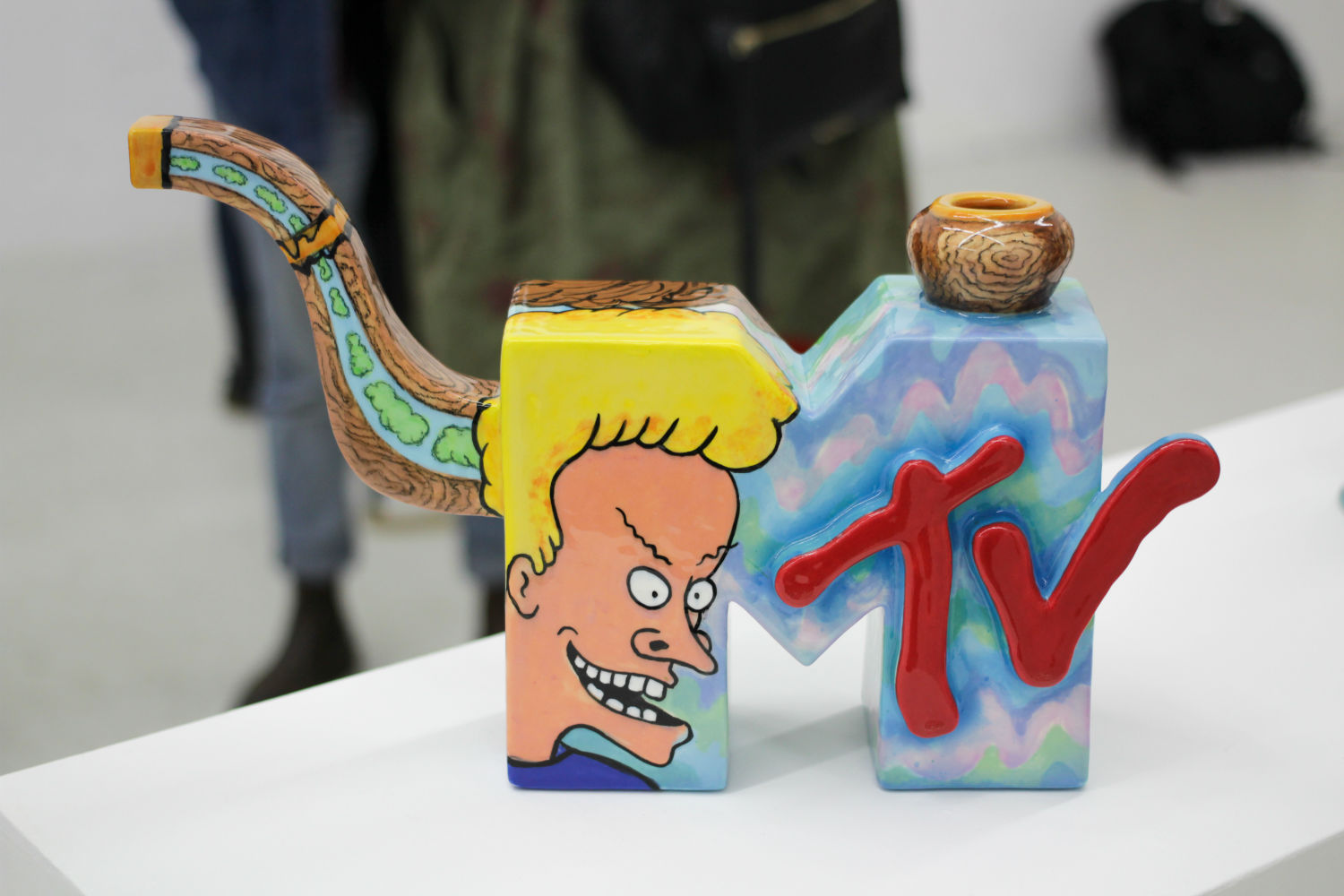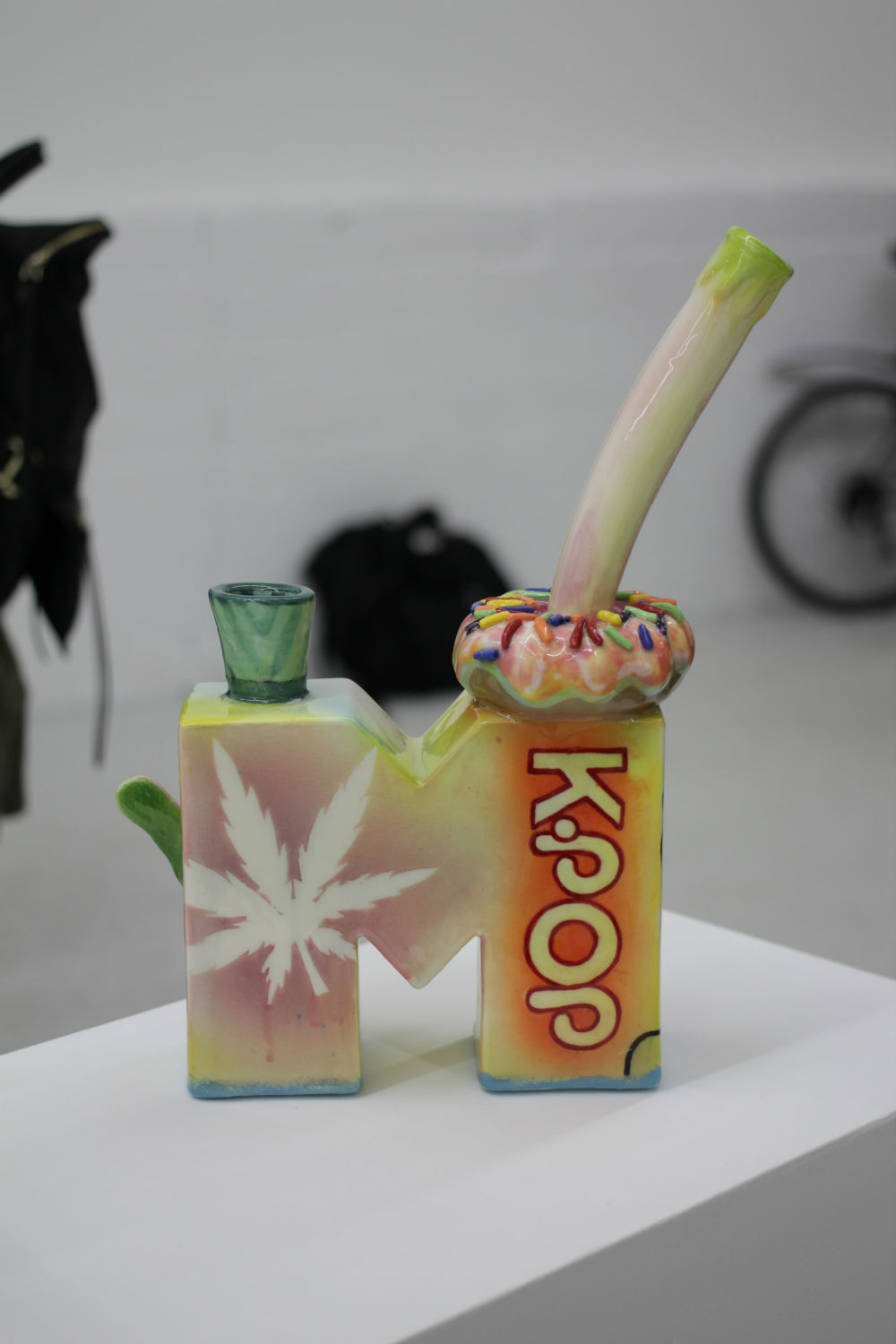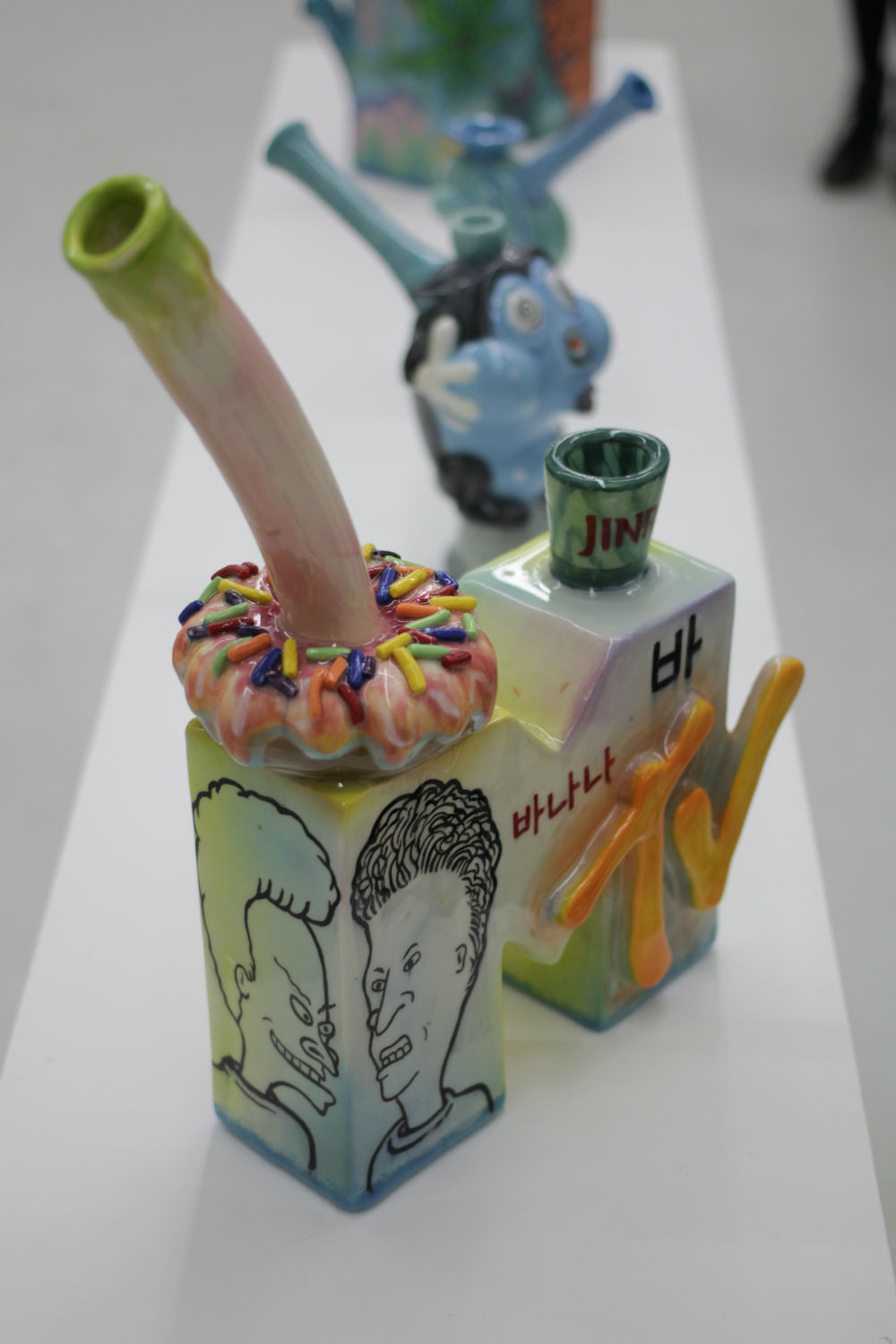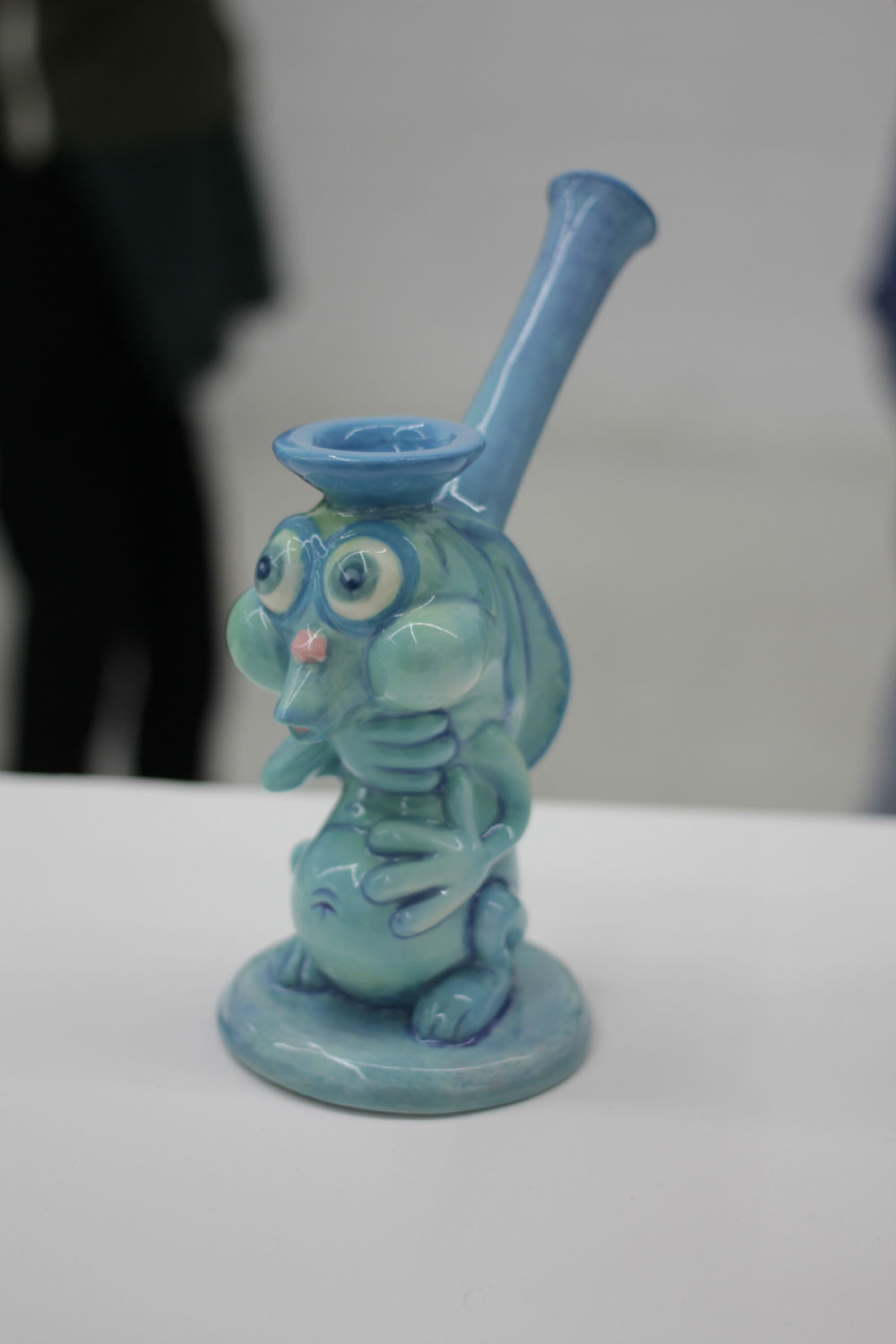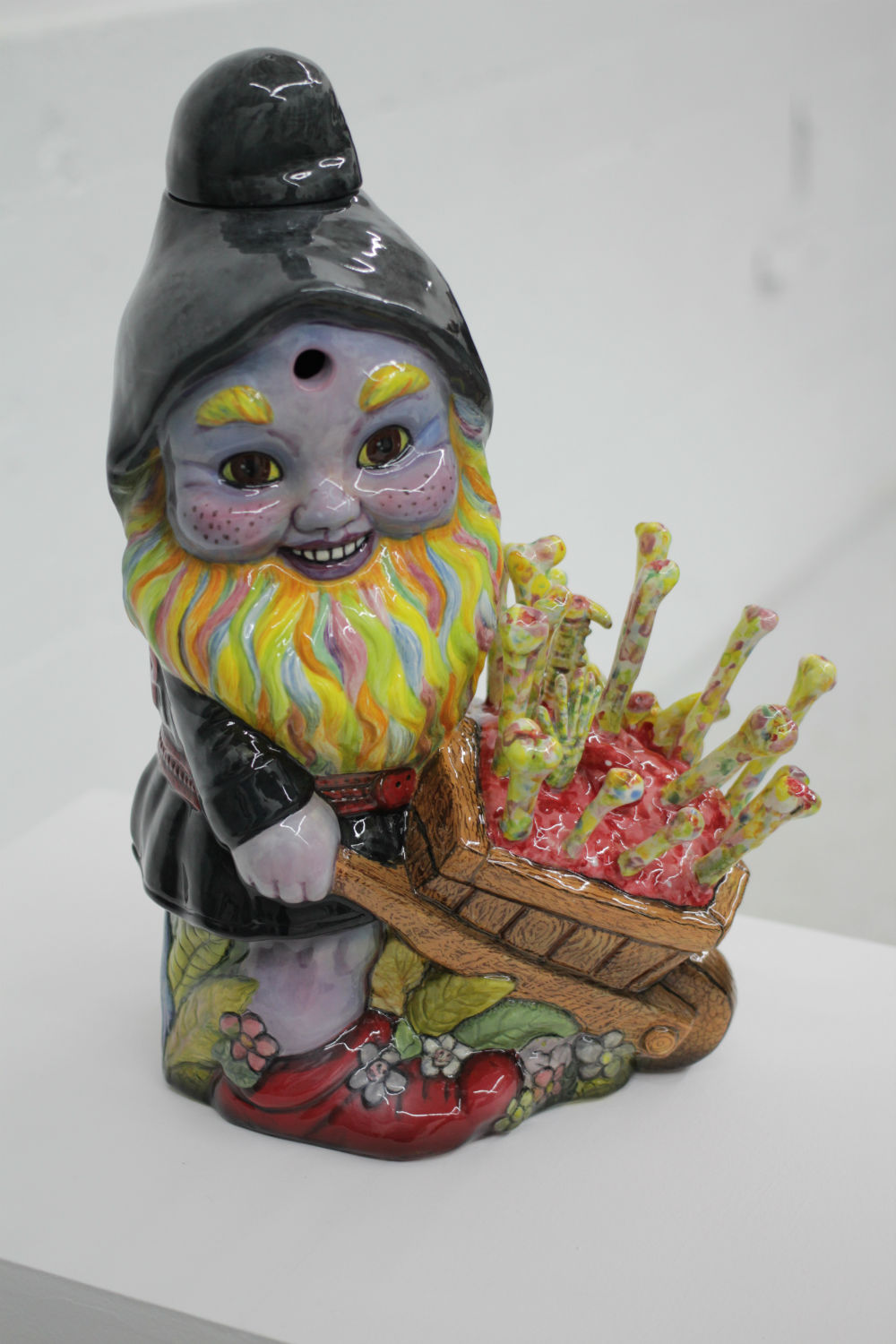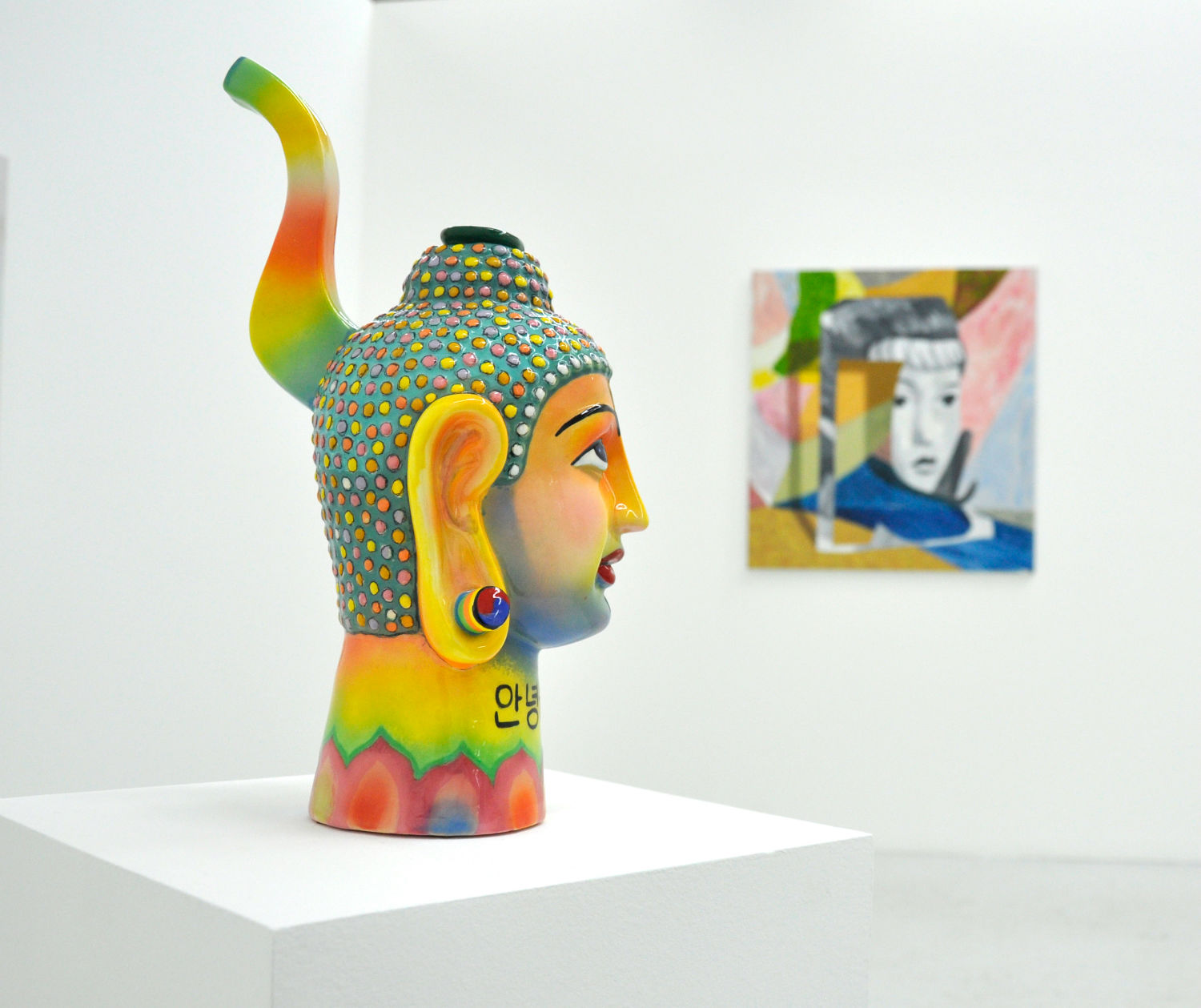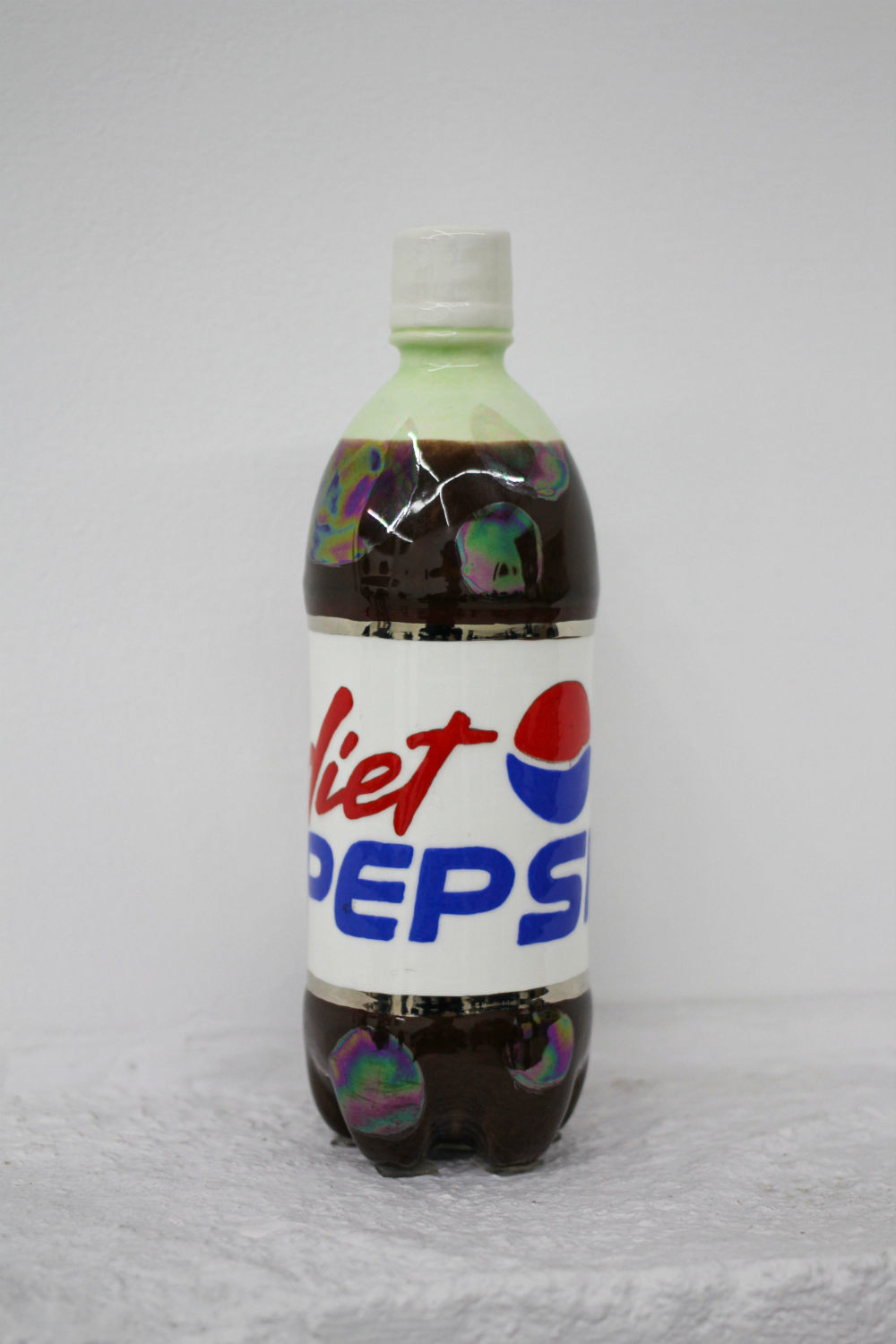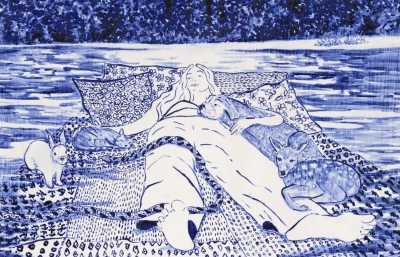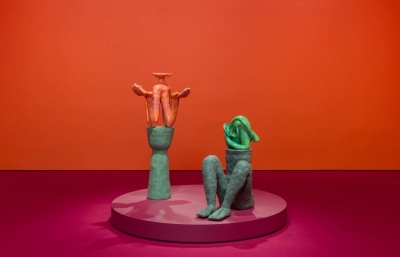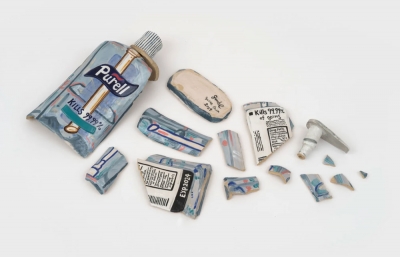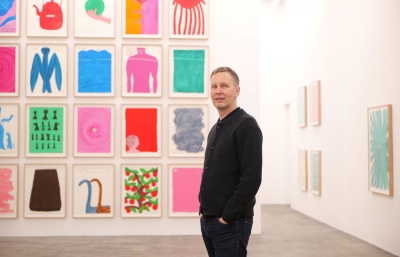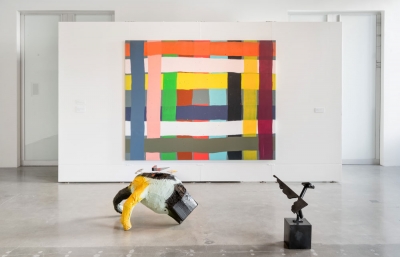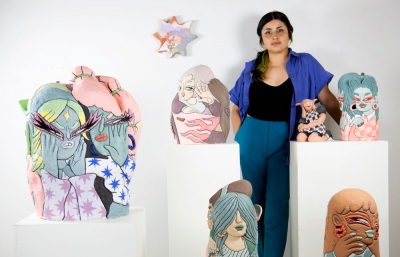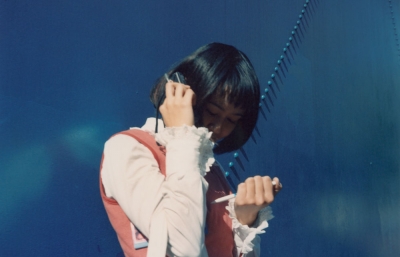I was lucky enough to study under John de Fazio during my time at SFAI, taking as many classes from him as I possibly could over a quick two-year span. The definition of unassuming, John arrived each day in the same worn San Francisco sweatshirt and Dickies, a wispy white beard emerging from beneath a camouflage or flame-emblazoned do-rag.
It seemed that de Fazio could speak with sensitivity and intelligence on practically any subject. It was no surprise to learn that his pair of hands had strapped Axl Rose into a straitjacket, as he designed props and sets for the “Welcome to the Jungle” music video, or that he had created so many of the twisted toys on Pee-Wee’s Playhouse. Yet, however incredible John’s work in the commercial realm, his knowledge and passion for the ceramic medium was mind boggling, culminating in surreal visions. Pop icons, political leaders, and '70s kitsch aesthetics collide, detonating into transcendental yet utilitarian objects like bongs and funerary urns, serving as cultural reliquaries for an era of hyper-consumerism. On a recent foggy evening, I had the pleasure of visiting de Fazio at his live-work space in San Francisco’s Mission district. Over glasses of cheap Tequila, we discussed the origins of John’s fascination with ceramics, the temporal nature of the medium itself, and how it fits into today’s art world at large. —Nick Makanna
Nick Makanna: I’m curious about where and when your interest in ceramics began?
John de Fazio: From the whole kitsch aesthetic really. The East Coast was into those greenware shops, and it was like a seasonal thing, a cottage industry where many women had this side line of investing in molds, casting them and having a neighborhood paint-your-own-souvenir kind of thing. On my way to grade school, there were three different greenware shops, and their windows changed seasonally, so it was almost like a calendar trip through kitsch—starting from Christmas nativity scenes, Christmas trees and Santas, then Valentine's Day and all the hearts and Cupids cast as 3D objects. In the windows, it was all bisque, so you could just project. Easter was crucifixes, Easter eggs and bunnies; Fourth of July was Uncle Sam; St. Patrick’s Day, all leprechauns, four leaf clovers. Every single Hallmark holiday had a line of ceramic kitsch objects. And, of course, Halloween was the ultimate, with witches, haunted houses and that stuff. Skulls.

How did you find yourself in San Francisco?
Richard Shaw, who was living in SF at the time, was in this group show in the early 1980s at the American Craft Museum in New York where he showed his porcelain stick figures that were this trompe l’oeil kind of “hobo art,” but with intense surfaces and the metaphysical energy that came with all his compositions dealing with still life imagery. I had never seen anything like that, and I knew that’s who I wanted to study with, so I traveled 3,000 miles to study with Richard Shaw in San Francisco.
How did that transition affect your work?
It was definitely for those Summer of Love kind of connections. Even in 1981, there were still remnants of that Haight Ashbury, with the poster shops and head shops, so that was the other kind of research that I wanted to do into the psychedelic culture of the time.
Were you making bongs before?
Yes, in 1976 I made my first high school bong, which was a Liberty Bell bong. And that just came out of necessity. Sometimes art-making is pure improvisation, and your first shot is the best one.
Growing up in the 1990s, it’s hard for me to imagine a real kitsch ceramic industry existing.
It’s gone, just nostalgia at this point, really.
When you were at SFAI and working with Richard Shaw, you already knew a language of slip casting and airbrushing, and then, at the same time, off the job board at SFAI, you got a gig working in another ceramic factory making Marilyn Monroe and all these movie busts. That sort of duality is still such a part of your work—the fine art headspace with a kitsch production line aesthetic.
It’s subject matter that people can relate to. I think kitsch is sort of a visual vocabulary, so if I can use the framework that the general public is comfortable with and then subvert that into a political message, that’s the main importance of my work.
And, with that, you seem to return to these certain forms, the funerary urn, the beer stein, the bong. What is it that brings you back to those objects?
They’re heavy objects, thematic objects. I think Adrian Saxe from UCLA said it best when he was curating a show I was in. He called them objects of agency, where the objects can take you from one state of consciousness to another. He was even talking about his experience as an altar boy, when the chalice in Catholic mass is a vessel for the transformation of the miracle, when wine gets turned into blood and, as an altar boy, or a former altar boy, I totally got his explanation of this. That was the common form, like funerary urns—how do you deal with death and loss? Maybe looking at an exquisite object commemorating a person could help to take you on a different transcendental plane than common brass.
In grade school and even in high school, the nuns’ version of art class would be giving out either posters or holy cards of Raphael paintings, Michelangelo paintings, Titians, and having you reproduce them. I did feeble versions of the masterpieces where everybody looked like a zombie, but that was my training; all of these miracle-based narrative images. That and immersion in pop culture was sort of how my aesthetic developed.

That’s basically your ceramic vision right there, isn’t it? After finishing grad school in the mid ’80s, did you go straight back to New York?
Yes, in 1984. The East Village art scene was the big thing happening and it was a total ghetto, maybe the last democratic art scene where you got noticed if you did incredible work and millionaires drove their limos to the galleries to look at it. Fun Gallery, the main gallery, was run by Patti Astor and her sister Jenny Tischner. Jenny had Fun Gallery West here in San Francisco’s Civic Center area. So my first show was with Fun Gallery West, and I had pieces in the back room. She was known for Keith Haring and Kenny Scharf, but Fun Gallery closed its doors, got demolished and turned into luxury condos. I moved to B-Side gallery on Avenue B, and it was there that I had a show of figurines and paintings that the producers of PeeWee’s Playhouse saw. They left me a note asking if I’d be interested in doing 3D animation models for the show. Pee-Wee’s Playhouse was all kids right out of college, it was the youth movement.
How do you feel that commercial jobs with PeeWee’s Playhouse or MTV have affected your practice?
I gained information from each of those jobs, and part of that was about interpersonal relationships with other artists and technicians. Before the internet, social networking happened through collaborating on music videos, films and TV programs. Fortunately, I was always hired for my own style. It’s not like I had to adapt my aesthetics for any of the jobs that I took.
I wonder how that disposability corresponds to your ceramic work?
It would break my heart to see everything in the dumpster the day after the shoot, all of these props and sets got trashed, whereas the fine art world still has a bit of reverence for something of craftsmanship and value.
Do you see your work as commenting on gender in any specific way?
Not so much. I don’t give it the front part of my brain as to what I’m doing being a gender issue kind of thing; I guess there’s a piss elegance to my pieces which encapsulates my kind of gay aesthetic, maybe a sensibility that permeates the work but doesn’t predominate.
----
Originally published in the March 2017 issue of Juxtapoz Magazine, on newsstands worldwide and in our web store.

